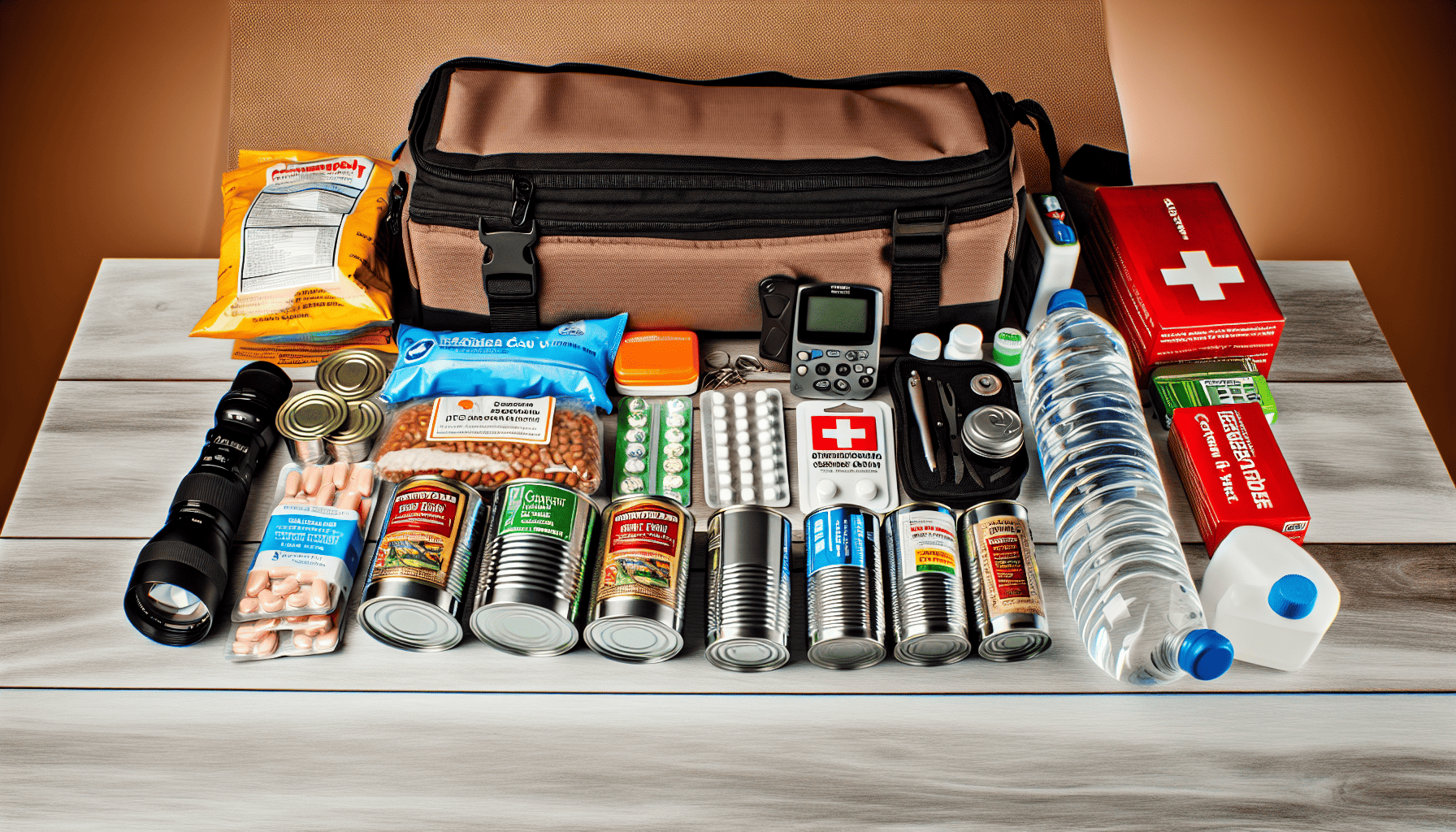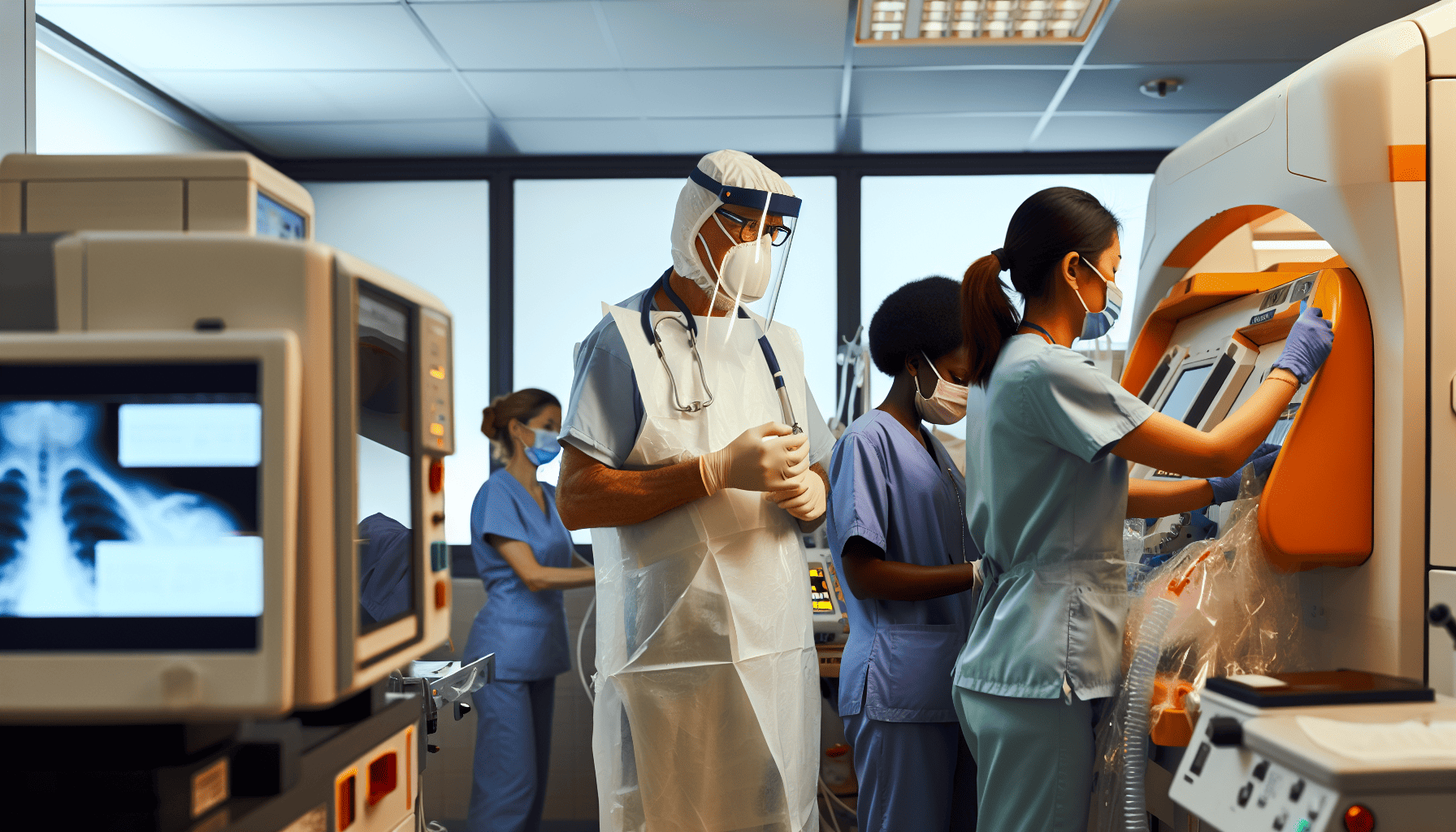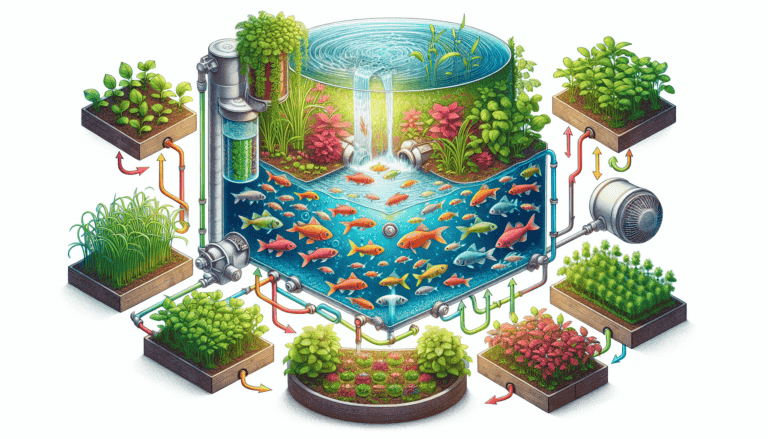Essential Emergency Preparedness: Your Complete Guide to Safety and Readiness
Emergency preparedness is essential for protecting yourself and those you love in times of unexpected emergencies or disasters. Creating a disaster readiness plan to be ready for any situation means having the supplies, knowledge, and strategies necessary to ensure your safety should something arise. This includes stocking up on first-aid items, food items that can last some time without electricity or refrigeration if needed – as well as developing an actionable strategy when things don’t go according to plan. Taking proactive steps towards being prepared now will bring peace of mind later. No matter how suddenly blackouts occur with no warning whatsoever!
Key Takeaways
Craft an emergency plan, build a kit and identify local hazards to prepare for emergencies.
Engage in whole community efforts and public-private partnerships for disaster response.
Implement hazard mitigation strategies, create workplace evacuation plans & ensure continuity of care during emergencies.
Essential Steps to Prepare for Emergencies

Being prepared for emergency situations is vital in order to protect yourself and those around you. Think of it as a safety net that will help catch any potential danger. It’s not meant to instill fear, but rather being ready for the worst scenarios when they occur.
Let us show you how best to be adequately prepared on a national level: Create an Emergency Plan, Put Together An Emergency Kit, and Identify Potential Hazards Nearby. With these simple steps we can put your mind at ease knowing that all aspects have been considered in regards to your safety!
Crafting Your Emergency Plan
Prior preparation is paramount when it comes to dealing with a disaster. Establishing an emergency plan ahead of time requires assessing any potential threats that can lead to emergencies, and involves having representatives from various areas such as local health departments, public safety organizations, and governments involved in the planning stages so that everyone has clarity on what needs to be done for an effective response. This way regional hazards are also taken into account since disasters vary between different regions.
Building an Emergency Kit
An emergency kit should be prepared for any potential crisis or disaster. This survival-like backpack can provide the necessary supplies to face a challenging situation. Basic items such as flashlights, batteries, whistles, dust masks and maps are essential in an emergency kit. These should all be kept waterproofed if possible. To those basics, it is recommended that you store matches (in a watertight container), have access to radio communication via hand crank power source and carry along with your first aid kit too! Do not forget about food – canned goods like soups/stews plus energy bars & dried fruit will help sustain you for at least three days, one gallon of drinking water per person each day would also add up pretty well here! Make sure prescription meds —labeled and secured in childproof containers — are enough to last seven through ten days minimum though just consider what fits best into your personal circumstances with this regard too. Assembling an equipped toolkit ahead of time could make significant progress when facing off against certain adversities then ultimately restoring safety again. While bringing order back from chaotic events alike, which may occur after being struck by unexpected catastrophes later on down the road either way.
Identifying Local Hazards

In order to be prepared for emergencies, it is important to understand the hazards that may exist in your local area. These could include anything from natural occurrences like floods, fires, earthquakes and storms. Or man-made disasters such as industrial accidents, acts of terrorism or shootings. There are a variety of resources available including The National Risk Index which can provide assistance when identifying potential dangers within one’s community.
Furthermore, being aware of possible risks surrounding you is an essential part of emergency preparedness. It begins with understanding these perils so always remember that awareness plays a significant role in successful preparation.
Strengthening Community Resilience

Discussing whole community efforts, public-private partnerships and hazard mitigation strategies can bolster the ability of a group to remain strong in times of emergency. We have all heard the saying “it takes a village” – this could not be more apt when it comes to boosting community resilience. It is about much more than individuals readying themselves for disasters. It’s about how an entire neighborhood or area responds and recovers from difficulties together as one unit.
Engaging Whole Community Efforts
Emergency preparedness is essential for the safety of communities, and everyone has a role to play. Local business owners and school teachers alike are called upon to contribute towards building plans which will work when disaster strikes. This could involve joining citizen groups or working with emergency authorities in order to form strong connections within the area they inhabit. As well as encouraging effective communication among members across different townships. By participating actively like this, it allows people to ensure their community’s resilience against any crises that may arise in the future.
Public-Private Partnerships for Disaster Response
The world is often impacted by disasters, so it’s essential to have public-private partnerships in place. These vital relationships can revolutionize the speed of emergency response and improve coordination between all stakeholders involved. They also help create resilience strategies that reduce risks before disaster strikes as well as provide clear guidelines for legal frameworks when emergencies arise. Community capacity should be increased through these collaborative efforts too if we are truly going to make a difference in times of crisis. Public and private organizations working together ensures faster response and recovery from potential natural hazards or human-made ones!
Implementing Hazard Mitigation Strategies
To achieve a community with minimal effects from potential catastrophes, the adoption of hazard mitigation tactics is essential. These preventive actions lessen the repercussions of disasters, preparing communities to tackle all kinds of unexpected events and cutting down on any harm they may cause while also helping them quickly bounce back after these unfortunate occurrences.
The implementation of such policies makes our neighborhoods not only ready for times like these but resistant to future disaster situations too.
Emergency Readiness for Healthcare Facilities

Healthcare facilities must have strong emergency procedures in place to ensure that care is not interrupted during any disastrous event or potential biological danger. Health administration protocols for dealing with disasters and emergencies, as well as preparation guidelines when it comes to diseases outbreaks, are essential components of health care operations. Both contingencies need to be planned carefully so healthcare workers can guarantee continued service even while a disaster situation unfolds around them.
Health Administration Protocols for Disasters
Healthcare facilities must be prepared for times of crisis and plan ahead to ensure they can provide a safe place of healing. Health administration involves clear communication, training staff on the resources available, understanding assets that are needed in case of emergency or disaster, setting up technology protocols as backup systems if necessary and having qualified healthcare leadership ready with their own tasks at hand.
Security should also not be neglected – personnel responsibilities need to take into account safety measures for all involved as well as maintain utilities such as electricity & running water in order to effectively manage health during disasters.
Where to Go For Emergency Medical Care
During a disaster, it’s crucial to know where to seek emergency medical care. In most cases, hospitals and emergency rooms will continue to operate, but it’s important to listen to local news or emergency management officials for information about whether they are open or have capacity. If hospitals are overwhelmed, temporary emergency medical stations may be set up in places like schools or community centers. These stations are typically staffed by medical professionals and stocked with emergency supplies. It’s also wise to know the location of urgent care facilities and pharmacies that might be less crowded. In any case, always ensure to have a list of emergency contact numbers and addresses of these facilities at hand.
Ensuring Continuity of Care During Emergencies
Healthcare facilities must be equipped with a plan to protect the continuity of care in case of an emergency situation. A Continuity Of Operations (COOP) should be established and implemented into disaster preparedness strategies as well as business continuance plans. Physical security measures need to remain intact for proper patient treatment during these times. By following all necessary precautionary steps, healthcare institutions can guarantee that they are ready to provide quality services no matter what happens due to any disasters occurring around them.
Preparing for Biological and Disease Outbreaks
Healthcare facilities must be ready and prepared to protect public health in the event of a biological threat or disease outbreak. To do this, they should have protocols and staff training put into place so that personnel are able to manage these situations efficiently. Preparedness can also include enhancing early warning systems, pandemic planning measures, as well as providing psychological support for those dealing with fear during an emergency situation. In other words, it is critical that healthcare centers ensure their readiness by having proper preparation strategies set up ahead of time, which could end up saving lives when such threats arise unexpectedly.
Workplace Safety and Emergency Preparedness

Creating Workplace Evacuation Plans, training personnel in Emergency Response and establishing a Business Continuity Plan are all important components to have in place when it comes to emergencies or disasters that may occur at the workplace. Having an effective strategy ready for such situations is essential as well as providing appropriate education on how best to respond.
Developing Workplace Evacuation Plans
During an emergency, it is essential to have a strong evacuation plan in order to prevent potential disaster and keep personnel safe. The plan should incorporate steps that guarantee the security of all people present during the evacuating process, such as protocols for those needing to remain temporarily onsite, plus somebody who can be responsible for managing and executing it properly. Also included must be accurately marked routes which allow everyone inside the building to quickly evacuate if needed. Ultimately, with clear directives set out beforehand, there will be less chance of confusion or panic arising at any given moment thus ensuring safety throughout workers is preserved even in times of danger.
Training Personnel in Emergency Response
Occupational safety requires proper training of employees for responding to any emergency situation. This includes making them aware of their roles and responsibilities, recognizing potential threats and hazards as well as assessing risks, involving staff members in the planning process, and utilizing effective teaching methods during training sessions. By doing this preparation work ahead time in terms of ensuring all necessary precautions have been taken with regard to health security, workplaces will ensure safe working conditions which helps prevent catastrophes from happening when least expected.
Creating a Business Continuity Plan
When a disaster occurs, businesses must be prepared to continue their operations. That is where the role of a business continuity plan becomes key: it helps them identify risks and assess impacts on their functioning, formulating an effective answer, recognizing vital processes and functions that need safeguarding ; regaining lost workspaces swiftly with reliable backup solutions while managing stakeholders’ communications effectively during such times. Having this comprehensive plan in place can help firms sustain themselves when catastrophes strike so as not to halt production or services indefinitely.
Preparing Schools for Emergencies
Schools are often seen as secure spaces for kids, yet they can still be affected by disasters and emergencies. This article will explore school emergency management planning, safety education, drills execution and teaming up with regional emergency services to better protect schools from unforeseen events. Keywords like Emergency Management Planning. Emergencies/Emergencies/Disasters. Safety Education & Schools need to remain in the text while making changes in expression and order of sentences where possible.
School Emergency Management Planning
To ensure the safety and security of their students and staff, schools must have a detailed emergency management strategy in place. This includes things like setting up safety teams that would be responsible for executing drills, creating individual action plans with clear objectives regarding handling emergencies, forming an organized structure among faculty members to coordinate communication between them as well as parent/community involvement through training sessions or seminars to educate on prevention tactics related to potential crises. Taking these necessary precautions can help schools effectively prepare themselves during any sort of unforeseen circumstance so they are better equipped if faced with an emergency situation.
Conducting Drills and Safety Education
Emergency preparedness in schools is essential, and safety drills along with educational activities are key elements of that. Schools can make sure their students and staff stay ready for any emergency by providing orientations, seminars/workshops, tabletop exercises, walk-through simulations, as well as scheduled and unexpected drills. By conducting these preparations properly, the school community will remain safe and fully prepared to face potential emergencies confidently.
Collaboration with Local Emergency Services
For the safety of students and staff, schools must build collaboration with local emergency services as part of their emergency preparedness. Such a relationship can guarantee immediate assistance during an unforeseen event and also promote enforcement of relevant laws, inspections by experts, and creation/execution of response plans. By connecting with such resources available in the locality itself, schools ensure they are well equipped to handle emergent situations effectively for maximum protection at all times.
Protecting Your Home from Disasters
In order to protect one’s home from potential disasters such as flooding, hurricanes and hazardous materials, it is important to take measures like installing fire safety devices and reducing the risks associated with these threats. Just as a castle has safeguards against external forces, your residence requires similar defense strategies in order for you to feel secure inside of your own domain.
Home Fire Safety Measures
Having the right safety measures in place is essential to protect your home and family from fires. Building materials with low combustibility should be used, flammable liquids must be kept away from any heat sources, fire extinguishers need to be installed and smoke detectors tested regularly for optimal protection. Taking such steps can help ensure that you are taking all possible precautions against a devastating event like a house fire occurring.
Safeguarding Against Floods and Hurricanes
Natural disasters like hurricanes and floods can cause major destruction, but there are measures you can take to protect your house from them. Securing shingles on the roof is one way to ensure strength against strong winds, drains should be clear for proper drainage of water, any crevices around doorways must be sealed tightly so no moisture creeps inside. Cutting off dead tree limbs prevents wind damage as well as potential falling branches onto property. Structures such as porches or storage sheds need tight connections that won’t break under bad weather conditions. Create an inventory list in case anything gets lost during unfortunate circumstances and also have adequate insurance coverage just in case events turn worst-case scenario level of direness. By utilizing these protective steps, homeowners may safeguard their homes from harsh environmental conditions stemming from natural disasters such as floods and hurricanes alike.
Reducing Risks from Hazardous Materials
Hazardous materials can be incredibly dangerous to the health of you and your family. To help prevent harm, it is important that proper storage and disposal practices are followed with household hazardous waste. When possible, use safer alternatives for potentially harmful products by always keeping them in their original containers which should clearly label potential hazards or safety instructions. Educating those who reside within your home on how they might come into contact with such risks must not go unaddressed. If these steps are taken correctly, chemical spills as well as other dangers posed by hazardous material will become much less likely occurrences, helping to ensure a safe environment all around for everyone living inside the same space!
Utilizing Technology for Emergency Alerts and Information
In this modern period of digitalization, emergency preparedness can be greatly improved through technology. By subscribing to National and Local Alert Systems, taking advantage of Social Media for instant updates, as well as protecting against Cybersecurity Threats. Individuals are able to stay up-to-date on any developing emergencies.
Signing Up for National and Local Alert Systems
When unexpected events occur, national and local alert systems managed by a national institute provide up-to-date facts to stay safe. These alerts give you quick access to vital data so that you can remain informed during emergencies.
By registering for these warning services, it is possible to make sure that one will never lack important information in an emergency situation.
Leveraging Social Media for Real-Time Updates
In an emergency situation, social media can provide you with real-time updates. Utilizing these platforms in the correct way is essential to stay informed. Here are some helpful tips:
Follow official accounts and join relevant community groups so that you will have access to information right away, enable notifications on your devices for even quicker alerting, and share reliable facts when possible by using hashtags and geolocation tagging of posts as well. By taking full advantage of all aspects available from social media during emergencies, it’s easier than ever before to remain up-to-date no matter what comes our way.
Preparing for Cybersecurity Threats
Being ready for any potential cyber threats, including possible attacks, is essential during a crisis. Familiarizing yourself with your data and identifying weak spots are two of the key steps to helping you protect against such risks. You should also make sure passwords are secure by using multi-factor authentication while making certain that all sensitive info is encrypted before it’s stored away safely in backups too. Remaining vigilant around phishing attempts can help fortify security even more in an emergency situation like this one!
Summary
It is essential to be prepared for whatever disasters may come. And the best way to do this is through forming an emergency plan, creating a disaster-ready kit and reinforcing community resilience. Plus, it’s important that healthcare facilities are also ready in case of emergencies. As Benjamin Franklin once said, “By failing to prepare you are preparing to fail”, taking time now can make sure both yourself and your loved ones remain safe later on. Preparedness doesn’t just involve being organized for any possible calamity, but building resilience when facing one as well.
Frequently Asked Questions
What are the 5 phases of emergency preparedness?
Emergency preparedness involves five main components: prevention, mitigation, preparation, response and recovery. These strategies are implemented in order to minimize the chances of disaster occurrence or reduce its severity if it happens. The sequence starts with prevention which is followed by risk reduction through mitigation, then comes readiness stage for quick reaction, after that people respond actively to confront danger.
What is the meaning of emergency preparedness?
Emergency preparedness is all about taking necessary steps prior to any emergency or natural disaster in order to make sure people are safe both during and after the event. This includes making plans, providing training, establishing partnerships, informing people on what needs to be done and other measures which help one get ready for potential hazards.
What are the 3 C’s of emergency preparedness?
Emergency preparedness is built on the three C’s: command, control and communications. These elements act as cornerstones for domestic readiness efforts.
What is a good emergency preparedness plan?
Developing a good emergency preparedness plan involves identifying individuals to contact, familiarizing yourself with evacuation routes and warning systems, understanding how to act during an emergency, and having detailed communication procedures.
Furthermore, learning where to seek shelter from all types of hazards and gathering information from local community and school plans are also important steps.
What are the main components of a thorough school emergency management plan?
A comprehensive emergency management plan for schools should include safety teams, drills to practice how to respond in an emergency situation, individual action plans, and a structure with clear roles and responsibilities assigned within the organization regarding procedures during emergencies. As well as systems of communication (to facilitate access to information) and accountability. It is important that parents/guardians be actively involved in order to ensure maximum safety standards are maintained.




